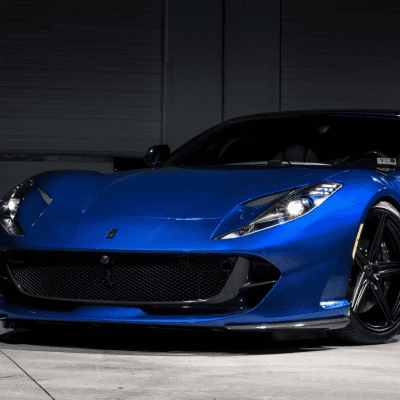The Tourbillon replaces the Chiron’s W-16 8.0-liter quad-turbo engine with a brand-new 8.3-liter V-16 featuring a cross-plane crankshaft—equivalent to 16 cylinders from a flat-plane V-8. This engine revs up to 9,000 rpm, generating an impressive 986 horsepower and 664 pound-feet of torque. Developed in collaboration with Cosworth, the engine surprisingly opts for natural aspiration over forced induction.
At first glance, this might seem like a step back from the 1,578-hp Chiron Super Sport. However, the Tourbillon’s powertrain story goes beyond its high-revving internal combustion engine. The V-16 is boosted by three electric motors: two on the front axle and one at the rear, collectively producing 789 horsepower. When combined with the engine, the Tourbillon’s powertrain delivers a staggering 1,775 hp. Additionally, the vehicle can travel nearly 30 miles on electric power alone, which may ease concerns about fuel prices after investing $4.6 million in this luxury hypercar.
The engine swap also gives Bugatti Rimac the opportunity to reorganize components beneath the Tourbillon’s carbon fiber body. This redesign allows the team to create a more ergonomic cabin, distinctive seven-figure dihedral doors, and a lower, more aggressive profile. While the Chiron positioned its transmission between the driver and passenger, pushing the seats to the edges of the vehicle, the Tourbillon’s eight-speed dual-clutch transmission is located behind the engine, with a 21.0 kWh battery situated in the vehicle’s center.
Crystal Clear Design
The name “Tourbillon” isn’t the only element inspired by watchmaking. The instrument cluster resembles a mechanical timepiece, mounted on the steering column and left exposed. The glass covering this clock face is made of polished sapphire crystal, a luxurious material used by watchmakers for its scratch resistance—take note of your tennis bracelet.
“The real revolution is in the interior,” says Rimac, emphasizing that nothing ages a car faster than outdated screen technology. Frank Heyl, Bugatti Rimac’s design director, agrees. “We’re trapped in the technology of our time,” he notes. “So how do we keep the car relevant for auto shows in 2075 without looking ridiculous in a future dominated by holographics or augmented-reality contact lenses? We’ve made the entire interior analog, allowing for genuine interaction.”
Not just analog, but also stunningly crafted and mechanical, with a fixed hub steering wheel that never obscures the instrument cluster. In a fitting tribute to the Tourbillon’s inspiration, a Swiss watchmaker created the gauges, complete with raised numbers and physical hands. A small screen is available for those who require a few pixels, but it can be folded away, leaving only the back of the crystal console and the softest leather visible. All of this is customizable, and Bugatti is eager to match your Tourbillon with a particular watch or yacht you desire.
Exterior design elements like the horseshoe grille, the C-shaped separation line at the back of the cabin, and the raised spine running along the center of the roof visually link the Tourbillon to the Chiron and other significant Bugatti models from the past, such as the Type 35 and the Atlantic. While it resembles the Chiron, the Tourbillon shares no components with its predecessor. It sits 1.3 inches lower, has a narrower horseshoe grille, sharper C-lines, and wider fenders.
Designed to enhance accuracy, the tourbillon is a rotating cage that contains the inner workings of a mechanical watch. Bugatti named its new model after this technology as a way to celebrate the analog and mechanical nature of this hybrid hypercar.
Innovative Aerodynamics
Unlike many sports cars—which often have sharp edges and defined lines—the Tourbillon controls airflow with subtle air intakes in the headlights and C-lines. The carbon fiber underbody diffuser extends beneath the rear half of the car, allowing the submerged rear wing to function as an air brake without adding drag on the way to a top speed of 277 mph. Smart software manages the integration of the engine and motors (all developed in-house at Bugatti Rimac), enabling the car to reach 60 mph in approximately 2.0 seconds and 250 mph in about 25 seconds.











